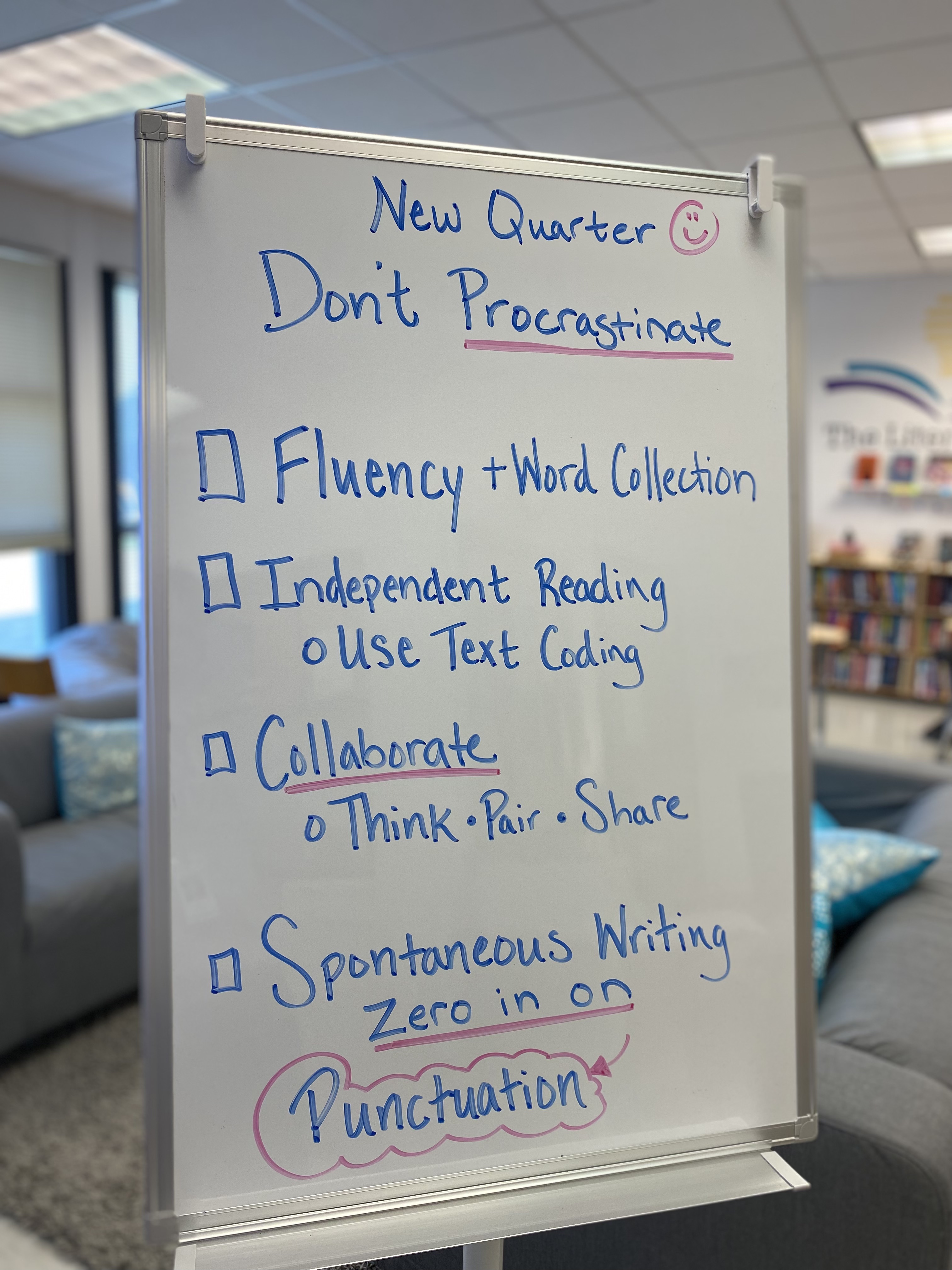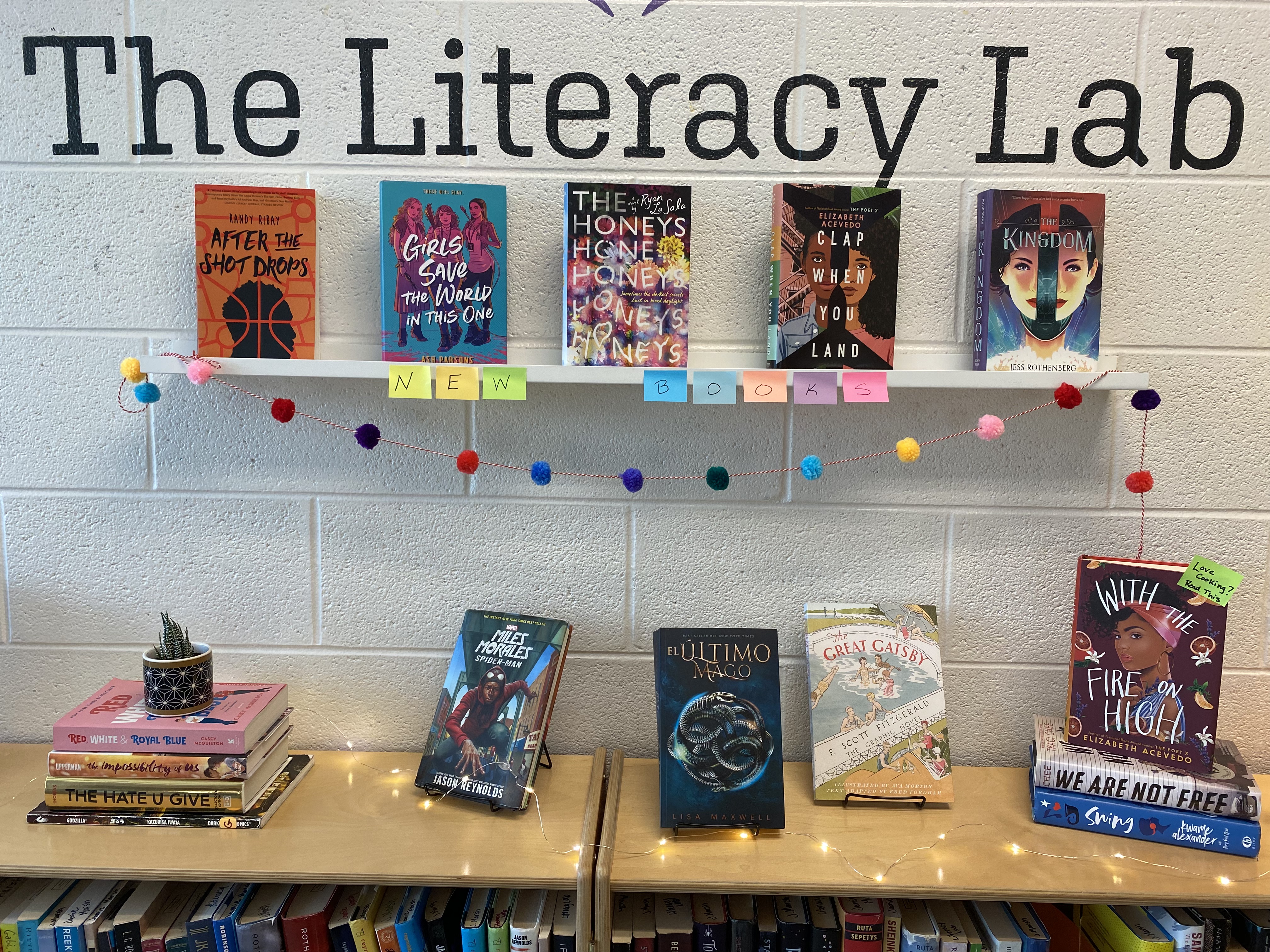Creating Literacy Rich Environments in Secondary Classrooms
How do we create a literacy-rich environment while keeping an open and airy classroom? First, let’s talk about the elephant in the room —classroom clutter— specifically, word clutter. It gets the best of us; a word chart here, a motivational poster there. They are all great, but are they the meat and potatoes your students really need? Let’s find a way to tidy up that word clutter!
I manage my classroom’s word environment daily to make sure my students are learning new words in a language-rich environment with meaning and thoughtful purpose. What does that look like?
Ideas to Try…
- A well-worded agenda can be a game changer in your classroom. This is especially true if you verbally review your agenda daily. I purposefully put in challenge words on my agenda as a talking point.
- Word of the Day/Week is a fun way to highlight a specific word. You can give kids a challenge to use the word that week either via spoken or written form. Once you use a word, the chances it will “stick” are better! I use Merriam-Webster Word of the Day to find interesting words to bolster word learning.
- Word Walls can serve as teacher-and/or student-generated word lists that act as a visual representation of important words. They are a flexible classroom tool that allow you to “choose your own adventure” to best meet the needs of the students in your classroom. And, yes, these are used quite heavily with the younger set of kids, but I can assure you that my high school students loved having their vocabulary words easily accessible. Especially when we play games with them! Check out how one teacher has used word walls with their high schoolers for the past nine years.

Things to Avoid…
- Words in the room that have no purpose. There is no need to put up all of your learning targets for the entire year. In my experience, students do not spend their days longing to read your learning targets.
- Once students have mastered a word, move onward and upward; don’t keep the word clutter!
- Make sure you clear out your word wall with new learning. Students should have minimal visual distractors when they learn. This is good for any learner, but it is especially great for students with learning differences.
Books...Books...Books


After you tidy up your room and free it of unwanted distractors, it’s time to add in some books! I love a good book display. This is great for any content area because it shows students that reading is not an isolated event. Your display could be one book or 20. Just keep in mind that the books are in your room to be read!
Make sure you select books that are middle grade or YA appropriate and support your content areas. The more you know about a book, the better! You will be surprised how many kids will be inclined to read your favorite book if you label it “My Favorite Book.” Make sure you keep your little library tidy and clean to entice new readers to your shelves. Consider this your tiny fishing lure dangling in your classroom. Hopefully, you will snag a new reader!
If you are looking to add titles to your collection, make sure to check out AdLit’s Book Finder, Diverse Book Project, and themed book lists. They are all great resources for building your classroom library!
How Does Your Room Sound?
After you have made your classroom look amazing, you should also consider how your room sounds. Do your students hear you speak using robust vocabulary, or do you limit your word choice to make sure they can understand you? If you consider that you might be the only person speaking with a great vocabulary that day, the pressure is on to pepper in a word here and there to stretch their vocabulary.
I like to use a massive (big) word with the easier word right after it (like I just did in this sentence). It is easy for students to pick up on vocabulary if you keep repeating these big words, so refrain from limiting your vocabulary. Sprinkle in a few words every day with intention, and you will be surprised to see word learning happen right before your eyes.

A Final Thought…
Take a good look around at your room. Evaluate it through the lens of the student. Is your room static and unchanging or does it change with the needs of your students? As we all know, change can be a very good thing.

